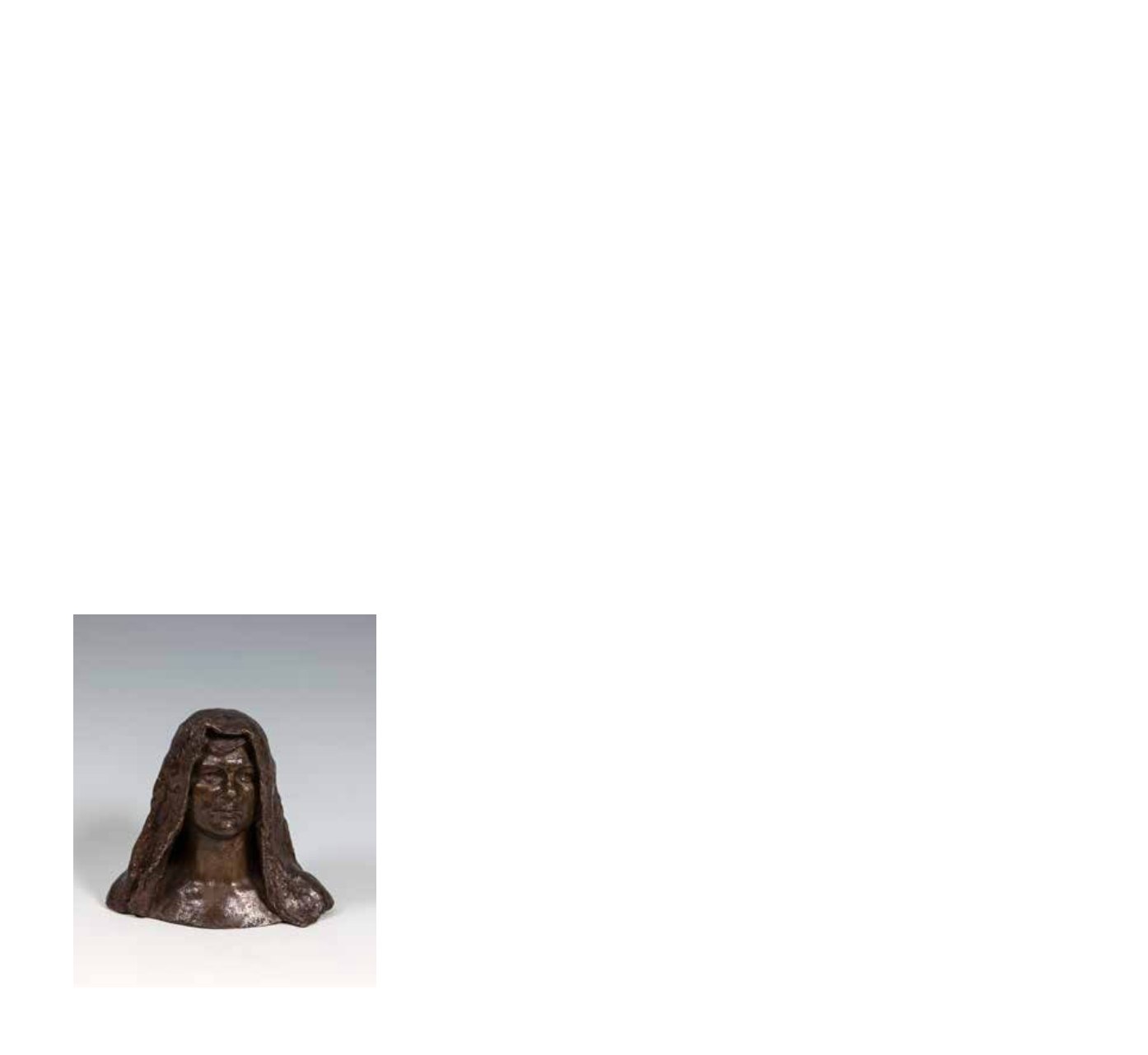
64
36
Jerome Connor (1876-1943)
Irish Peasant Girl (Irish Maiden)
Bronze, 16.5cm high (6½”)
Provenance: Purchased from the artist c.1941/2 by John P. Reihill; Deepwell, Blackrock, Co. Dublin
Exhibited: RHA Annual Exhibition, Dublin, 1942, Cat. No. 296 (lent by Mrs J.P. Reihill)
IELA, 1st Exhibition, Memorial Section to Jerome Connor, Cat. No. 16
Literature:Máirín Allen, Jerome Connor -Two, Capuchin Annual 1964, pp353-69 (illustrated p365)
The sitter in this case is probably Statia Balfe. Her veiled head suggest a relationship with studies
being conducted by Connor in relation to the Lusitania Memorial
Angel of Peace
.
Jerome Connor ranks among the major Irish sculptors of the first half of this century, along with
Andrew O’Connor, John Hughes and Oliver Sheppard.
€2,000 - 4,000
The Deepwell Collection
Born near Annascaul, Co. Kerry, in 1874, Connor was thirteen when the family emigrated to Massachusetts. Shortly after their arrival his father died so
Connor left home to seek work, beginning first in New York where he found employment as a sign-painter, a machinist and then as a stone-cutter for a
monument company in Massachusetts, where he worked on the South Hadley Civil War Memorial. During this time he made additional money as a prize-
fighter under the name of Patrick J. O’Connor. He also trained as a bronze-founder and assisted Roland Hinton Perry (1870-1941), in the casting of
The
Fountain of Neptune
bronzes for the Library of Congress, Washington DC, all before he was twenty-one years old.
Having worked for a period at the Roycroft Institution, East Aurora, New York, where he produced commercial terracotta busts. Connor graduated to “high”
art via portraiture, producing Civil War memorials and various monuments. His Irish-American connections brought him the Robert Emmet commission,
and later, the Lusitania Memorial commission, funded by the Lusitania Peace Memorial committee and to be sited at Cobh. He was also commissioned to
carry out a full length statue of Elbert Hubbard, founder of the Roycroft Institution and personal friend of Connor’s who died in the sinking of the Lusitania.
On the strength of these two commissions he returned to Ireland in 1925, taking a studio on the North Circular Road in Dublin. However, the designs for
the Lusitania Memorial were frequently changed, although whether the decision of change came from the Lusitania committee or the sculptor himself is
unclear. Conceived of as a symbolic appeal for world peace, the Memorial was to occupy Connor for nearly eight years, from 1929-1936, and although he
had produced several designs, plans, scale models and some full-size symbolic figures it remained unfinished at the time of his death in 1943. (The monument
was not finally completed until 1968).
Connor undertook other commissions including a memorial for Tralee entitled
The Pikeman,
to commemorate the 1798 Rising, and a figure of
Éire
, for the
Killarney Poets Society in commemoration of Gaelic poets of 18
th
century Kerry. He also entered designs for a national coinage, became friendly with W.B.
Yeats and A.E. and exhibited in London where his work was positively reviewed by leading critics. At the same time he kept up his links with America, going
back there regularly, (his wife and daughter had returned there c.1934). In 1939 Connor was declared bankrupt; he lost possession of his studio and the war
cut him off from his family in America. From this time until his death Connor exhibited in Dublin a remarkable series of small bronzes which he described
as “little pieces of free work”, more loosely handled in their use of clay than his earlier output.They are of particular importance as they are the product of a
talent which first introduced the processes of casting, chasing and patinating of bronze to Ireland.
Jerome Connor (1876-1943)


